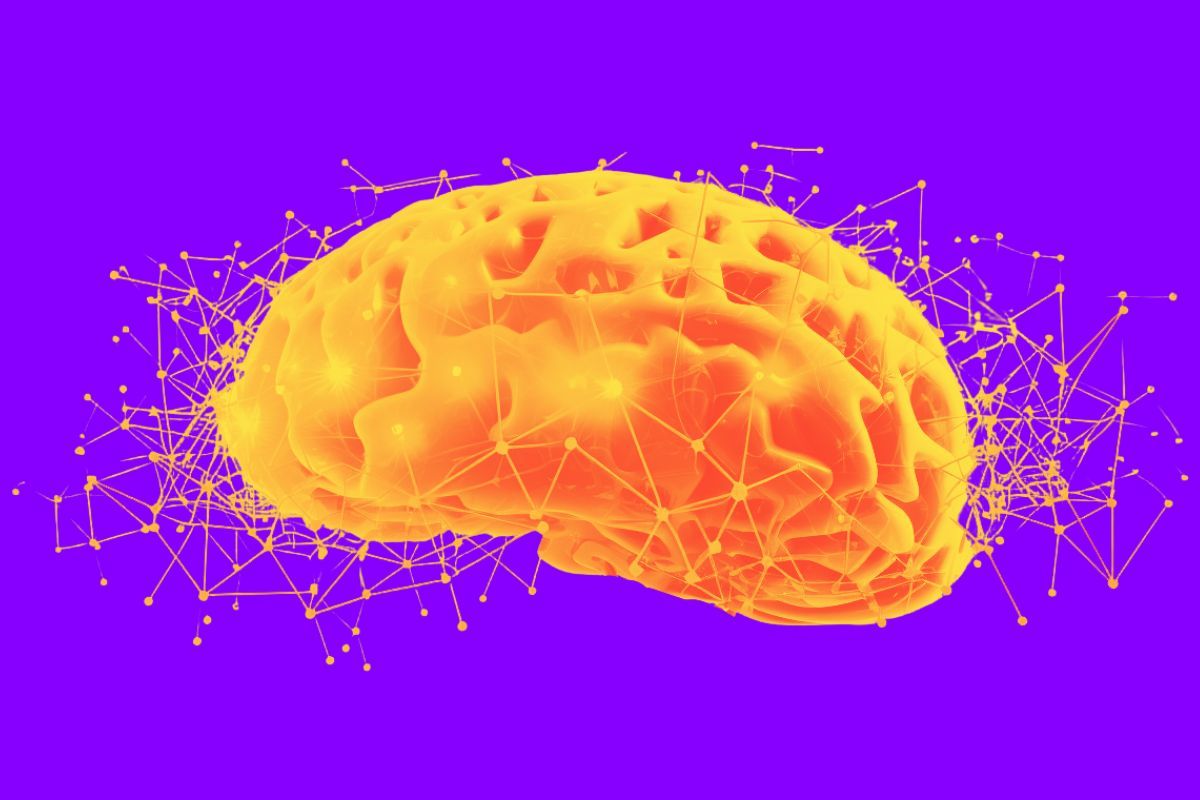Large language models (LLMs) are possibly the single biggest breakthrough in natural language processing, enabling remarkably human-like text generation and comprehension.

The evolution of LLMs like GPT-4 and Claude, trained on massive datasets, has driven explosive progress in conversational AI like chatbots. LLMs' versatility also allows them to power a sweeping scope of applications from content creation to text analytics and even coding assistance.
LLM Fundamental Abilities
LLMs which have become integral components of modern natural language processing tools, possess an array of operations that they can expertly perform on text.
These fundamental abilities or fundamental operations, are a reflection of the basic, yet critical, tasks that these models can execute due to their extensive training on diverse datasets.
Fundamental operations can be likened to the foundational skills of a seasoned linguist or writer or even a data analyst. They encompass tasks ranging from text correction and summarization to more intricate procedures like aspect-based sentiment analysis and text normalization.
In essence, they are the building blocks that allow these models to comprehend, manipulate, and generate text.
An overview of these operations reveals a blend of:
- Comprehension Abilities: Such as sentiment analysis, which gauges the emotion behind a piece of text, or named entity recognition, which identifies and categorizes entities like people, places, or dates.
- Text Manipulation: Skills like error correction, which can detect and rectify typos or grammatical errors, or synonym replacement, where words can be swapped with their equivalents without losing the essence of the message.
- Analytical Proficiencies: These allow the models to dissect text in various ways, whether it's extracting key concepts, assessing readability, or categorizing content based on sentiment.
- Generation and Enhancement: The models can expand on provided content, either by extrapolating from existing information or by enhancing clarity and coherence.
Here is a list of the common Fundamental Abilities the LLMs should be proficient at:
- Text Completion: The model can complete partial sentences or paragraphs in a coherent and contextually appropriate manner. Example: "Complete the following sentence: 'The main advantage of renewable energy is...'"
- Text Generation: This entails creating coherent and contextually relevant text based on a given prompt. Example: "Write a brief introduction for a talk on climate change."
- Summarization - Condensing longer text into a concise summary while retaining key information: "Summarize this research paper in 2-3 sentences"
- Sentiment analysis - Identifying the prevailing emotional tone or attitude within the text: "Analyze the sentiment of this movie review on a scale from very negative to very positive"
- Intent Identification: This is the capability to discern the purpose behind a sentence or query, helping in tasks like chatbot design. Example: "What is the user trying to accomplish with the sentence: 'Tell me the weather in New York?'"
- Named entity recognition (NER) - Labeling entities like people, places, and organizations in text: "Highlight all named entities in this news article"
- Part-of-Speech Tagging: It involves tagging each word in a sentence with its corresponding part of speech, such as noun, verb, adjective, etc. Example: "Tag the words in this sentence with their parts of speech."
- Language Identification & Translation: While not specialized in translation, the model can provide rudimentary translation between languages. The model can also recognize which language a particular piece of text is written in. Example: "Translate the following sentence into French."
- Question Answering: The model can answer questions based on provided text or general knowledge. Example: "Based on the following passage, what was the author's main argument?"
- Paraphrasing: The model can rephrase sentences or passages, preserving their original meaning. Example: "Rephrase the following statement for clarity."
- Text Simplification: The model can rewrite complex sentences or paragraphs to make them easier to understand without losing essential information. Example: "Simplify the following legal document to make it understandable for a layperson."
- Coreference Resolution: The model can identify when different words or phrases in a text refer to the same entity. Example: "In the sentence 'Sally picked up her book and then she left,' who does 'she' refer to?"
- Syntax Parsing: The model can analyze the grammatical structure of a sentence, breaking it down into its components. Example: "Parse the following sentence into its syntactic elements."
- Keyword Extraction: The model can identify important words or phrases in a text that give insight into the content. Example: "What are the key terms in this research paper?"
- Temporal Ordering: The model can arrange events described in a text in the order in which they occurred. Example: "Arrange the following events in chronological order."
- Topic modelling - Identifying the main themes or topics covered in a document: "Determine the key topics discussed in this research paper"
- Semantic search - Finding documents relevant to the meaning behind a query, beyond just keywords: "Perform a semantic search of the research literature on this question"
- Relationship extraction - Identifying associations between entities mentioned in text: "Extract relationships between organizations mentioned in these news articles"
- Concept tagging - Labeling abstract ideas or concepts present in text: "Tag conceptual topics covered in this textbook chapter"
- Sentence embedding - Encoding sentences into vector representations capturing meaning: "Generate vector embeddings for each sentence in this passage"
- Anomaly Detection: The model can identify outliers or unusual patterns in a text, useful in contexts like fraud detection. Example: "Is there anything unusual in the following log entries?"
- Relation Extraction: This involves identifying and categorizing relationships between named entities in a sentence or paragraph. Example: "What is the relationship between Company A and Company B in the given text?"
- Text-based Arithmetic: The model can perform basic arithmetic calculations based on text prompts. Example: "What is the sum of all the numbers in the following paragraph?"
- Contradiction Identification: The model can identify when two statements or pieces of information in a text contradict each other. Example: "Do the following two sentences contradict each other?"
- Text Classification: Beyond topic classification, the model can classify text based on various other criteria like formality, complexity, or style. Example: "Is the following email written in a formal or informal style?"
- Abbreviation Expansion: The model can expand abbreviations or acronyms into their full forms. Example: "What does the abbreviation 'NASA' stand for?"
- Fact Verification: While not foolproof, the model can attempt to verify the accuracy of factual statements based on its training data or provided data. Example: "Is it true that the Eiffel Tower is in Paris?"
- Sentiment Intensity: Beyond basic sentiment analysis, the model can sometimes gauge the intensity of the sentiment being expressed. Example: "On a scale of 1 to 5, how negative is the sentiment in this review?"
- Code Generation: The model can generate simple code snippets based on a textual description, although it's not a replacement for a specialized code editor. Example: "Generate Python code to reverse a string."
- Elaboration and Specification: The model can elaborate on vague or ambiguous statements to make them clearer or more detailed. Example: "Could you elaborate on what is meant by 'improved user experience' in the given context?"
- Text Chunking: Divides long paragraphs into smaller, more manageable sections without losing context. Example: "Chunk this paragraph into smaller sections suitable for a presentation slide."
- Error Correction: Identifies and corrects spelling and grammatical errors in a text. Example: "Correct any errors in the following paragraph."
- Concept Extraction: Isolates and lists key concepts or ideas from a body of text. Example: "What are the main concepts discussed in this article?"
- Text Reordering: Rearrange sentences or paragraphs to improve coherence and flow. Example: "Reorder the sentences for better flow and readability."
- Readability Assessment: Evaluates the readability level of a text-based on factors like sentence length and complexity. Example: "Assess the readability of this text. Is it suitable for middle-school students?"
- Tone Adjustment: Modifies the tone of the text to fit a specific context, such as making a text more formal or informal. Example: "Adjust the tone of this email to be more formal."
- Summarization by Importance: Summarizes text by focusing on sentences or passages considered most important or relevant. Example: "Summarize this article, focusing only on the key findings."
- De-duplication: Removes repeated information or sentences from a text. Example: "Remove any repetitive statements from the following text."
- Extrapolation: Extends the ideas or concepts in a text to predict or speculate on future outcomes. Example: "Based on this report, what might happen in the next quarter?"
- Localization: Adapts text to make it relevant for a particular geographic or cultural context. Example: "Localize this marketing message for an Australian audience."
- Quote Extraction: Identifies and extracts quotations or cited material within a text. Example: "Extract all quotes from this article."
- Data Extraction: Pulls out specific types of data like dates, numbers, or email addresses. Example: "Extract all email addresses from this text."
On the other hand, specialized higher-order objectives like generating creative fiction, assessing logical fallacies, or providing detailed medical diagnosis would require more prompting specificity and background details to help the LLM through advanced reasoning.
Recognizing the core natural language competencies embedded in LLMs allows prompt engineers to streamline prompts for basic tasks. Fundamental skills come readily to models like GPT-4, requiring less prompting rigour compared to prompting for niche, complex objectives. Identifying the objective task type guides how much prompting is needed.
LLM Fundamentals as Prompt Building Blocks
These core natural language capabilities of large language models serve as building blocks for constructing more sophisticated AI systems and workflows. Rather than being ends unto themselves, abilities like summarization and question-answering represent modular skills for assembling prompts and applications.
Summarization can distil reference texts into concise background context for an LLM before directing it to a complex task. Sentiment analysis could process user feedback and then automatically determine optimal experience improvements. Multi-step semantic searches can gather diverse research to inform evidence-based decision-making.
Chaining multiple fundamental operations creates pipelines enabling complex workflows that extend beyond any single LLM competence. For example, an LLM could first classify a document's sentiment, summarize the key points, then generate a draft response email-chained tasks leveraging basic skills.

Embedding LLM fundamentals into agents adds dialogue abilities to direct models through multi-turn interactions. This integrates core capabilities like text generation, intent recognition, and response relevance ranking to handle prolonged conversations.
In essence, the programmatic integration of multiple basic LLM functions builds the skeleton for advanced applications requiring nuanced cognition.
Fundamentals become modular components powering higher-order complexity. Just as fundamental math operations enable all of the arithmetic, core LLM skills empower expansive AI capabilities.
Fundamental Abilities as an LLM Baseline in LLM Selection
Performance in these basic NLP tasks can serve as a foundation for determining an LLM's production readiness. If an LLM struggles with the fundamentals, it likely requires further training and tuning before deployment - even if it excels in more specialized domains.
Many openly available LLMs fail to match the standards of commercial models when evaluated on core abilities. While seemingly comparable on paper, these open-source options often have mediocre real-world performance on baseline NLP operations due to limitations in training data scale and compute power.
Unless an LLM carves out a niche advantage in highly specialized functions, underperformance in fundamental NLP should give pause to using it in production systems aimed at general language use cases. Robust capabilities in essential skills like summarization, sentiment analysis, and semantic search should be considered a prerequisite for LLMs operating in real-world applications.
Evaluating production readiness based on success in these fundamental operations establishes a rigorous quality baseline aligned with the current state-of-the-art in LLM development. For organizations leveraging AI, settling for subpar NLP fundamentals risks both degraded output quality and increased overhead retraining just to achieve commercial parity.
Extending LLM's Fundamental Abilities Through Fine-tuning
Fine-tuning is the process of retraining a foundational model using new data to adapt it for a particular task or to improve its performance.
Large language models come pre-trained with broad capabilities, but fine-tuning allows adapting them for specialized tasks to boost performance. Fine-tuning involves additional training on topical datasets.
In addition to specializing large language models for niche applications, fine-tuning can also be leveraged to enhance their core competencies. Further training focused on strengthening fundamental abilities results in performance improvements in those basic tasks.
For example, an LLM could undergo additional fine-tuning on diverse summarization examples to expand its generalization and bolster the concision, clarity, and accuracy of its summarization capabilities for specific domains such as law or medicine.
Training on sentiment analysis datasets spanning different domains could make an LLM's innate sentiment classification ability more nuanced and context-aware.
Prompt Engineers may choose to fine-tune a model on textual entailment tasks to improve its skill at identifying contradictions, inferences, and logical relationships between pieces of text.
So while specialization for new applications is a key use case, dedicated fine-tuning on relevant datasets can also boost LLMs' fundamentals like summarization, translation, question answering, and semantic search.
In essence, when baseline performance in certain fundamental tasks demands improvement, targeted fine-tuning provides a path to upgrade LLMs' innate abilities through supplemental training focused on strengthening those fundamentals.
Summary
In summary, large language models have proven revolutionary in natural language processing due to their impressive ability to comprehend and generate human-like text.
These models possess a diverse set of core competencies like summarization, translation, and question answering that serve as building blocks for more advanced applications.
Evaluating performance on these fundamental NLP tasks establishes a baseline for determining an LLM's readiness for real-world deployment. While large models come pre-trained with broad capabilities, fine-tuning allows adapting and enhancing their skills for both niche tasks and strengthening core abilities. As LLMs continue evolving, their versatility and fundamental operations will enable expansive new possibilities in AI-powered systems and workflows across industries.
However, continued advances will require rigorous training data curation and compute scale to push the boundaries of what these models can accomplish. With thoughtful prompting and fine-tuning, large language models' fundamental skills make them a profoundly versatile asset for creating intelligent agents that understand and interact with language like humans.









